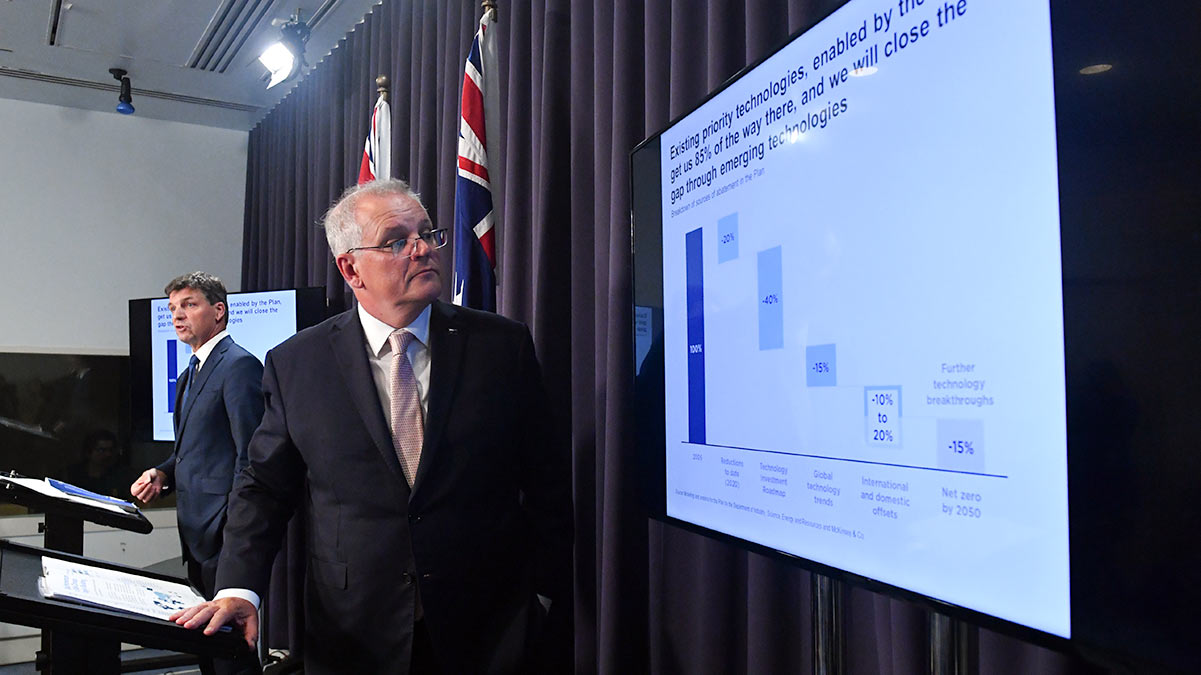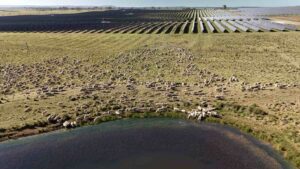A major investment ratings agency has labelled the Morrison government’s energy policies “obscure”, “unclear,” and “confusing”, and predicted long-duration battery storage could replace gas generators as providers of firming capacity within the next decade.
In a new research note published on Wednesday, ratings agency S&P Global Ratings said Australia’s lack of meaningful national climate policy, and uncertain energy policies, put it at risk of falling behind global peers in the shift to cleaner energy transition.
“Obscure energy policies at the federal level could cause inefficiency and mean Australia is left behind in the energy transition,” the research note, prepared by S&P Global Ratings analyst Parvathy Iyer, says.
The agency adds that the federal government’s “direction remains unclear and confusing” on energy policy and it had contributed to increased uncertainty around the outcomes of a post-2025 re-design of the National Electricity Market.
“Australia’s energy transition to 2050 relies on technology changes and lowers costs. This includes low-cost solar, energy storage for firming capacity, clean hydrogen, and carbon-capture solutions. Policies on how this will be achieved are opaque,” S&P Global says.
It said Australia’s coal producers faced dual risks from both ESG related concerns – with investors beginning to reduce their exposure to the fossil fuel, making it harder to finance repairs and maintenance at coal plants – as well as predicted declines in profitability.
“ESG-related risks and a decline in profitability will increasingly make coal-fired plants less reliable and hasten their closure unless there are incentives for an orderly exit,” Iyer said.
“Poor returns on capital will deter the use of capital expenditure (capex) to maintain reliability. Adding to credit risks are a shrinking investor base and the higher cost of refinancing coal plant debt because of ESG concerns.”
A growing number of Australian coal generators are facing accelerated closures, such as Origin Energy’s Eraring power station, which had its closure brought forward by seven years to 2025.
S&P Global attributed stronger state and territory government policy for spurring the growth of Australia’s clean energy sector, but warned that a lag in investment into new transmission created a risk that curtailments and connection delays could hamper this growth.
“Lagging network enhancement is the main risk in supporting renewable projects. Over the past two years, this lag has led to the curtailment of new projects. The market operator expects about 10,000km of transmission lines to be built over the next decade,” S&P Global said.
“Better coordination of renewable projects and storage across states can increase the efficiency of investments. The regulatory framework remains supportive, but the scale and cost of the buildout will partially offset the benefits of the low cost of renewables to consumers.”
The ratings agency also predicted that gas may only play a role as a ‘transition fuel’ within Australia’s energy system for the next 8 to 10 years, sideline by the emergence of cost-effective and long-duration battery storage projects and pumped hydro projects .
“Under volatile supply and demand conditions, coal plants support the system strength. Firm storage will be needed as more variable wind and solar generation replaces coal generation,” the briefing says.
“Few large-scale batteries storage sites have become operational in the past two years, and we expect the size and duration of support will evolve in the next 10 years.
“We therefore believe that for generation purposes, gas will remain a transition fuel for next eight to 10 years by which time batteries, hydro, and storage solutions for at least eight hours’ depth should be established.”
S&P Global has also predicted increased ‘fragmentation’ of Australia’s energy market, with new players entering the market as the market share of wind, solar and energy storage capacity grows.
This would attract as much as A$28 billion in new investment over the next decade – and potentially breaking up the dominant positions of big energy companies like AGL, EnergyAustralia and Origin.
“The capital investment required over the next decade is massive,” the briefing says.
“We expect the generation market to become fragmented and the size of the dominant market players to decrease. This, together with the highly competitive nature of the generation market, implies credit pressure will increase in the generation and retail sectors.
“The industry estimates new generation investments of about US$12 billion to US$20 billion over the next ten years to phase out coal-fired generation. Much of this is expected to go into solar, wind and hydro generation alongside storage solutions.”
“Coal-fired generation will also incur costs associated with retirement and remediation as sites shut down.”










